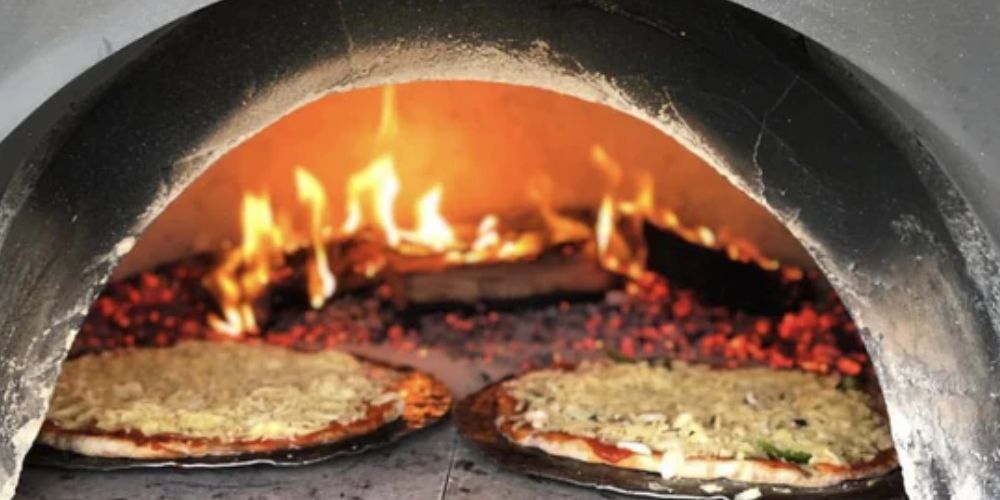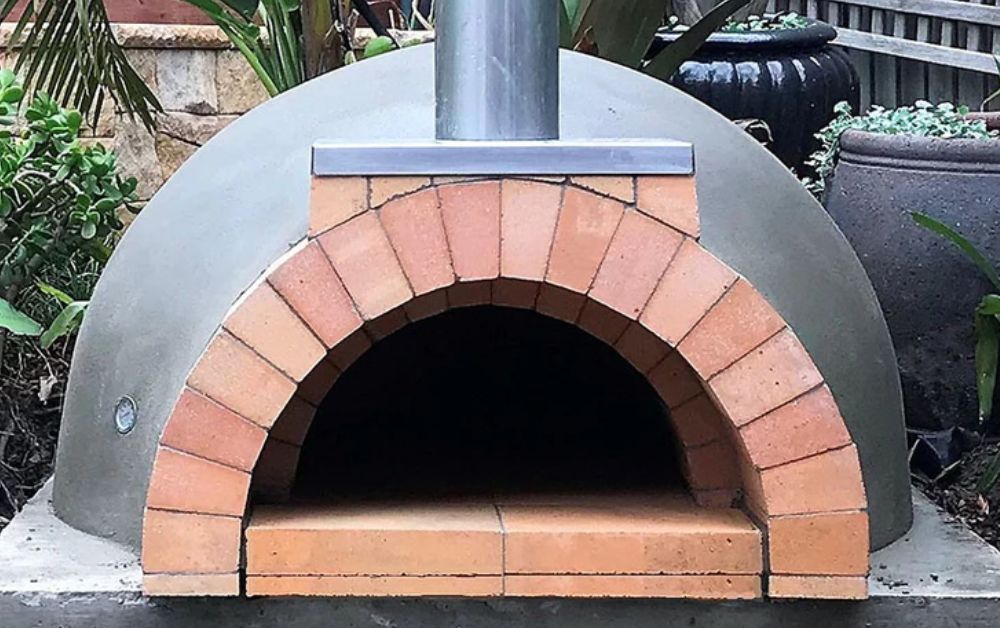If you're like me, you understand the sheer joy of biting into a perfectly cooked, crispy, yet chewy pizza crust topped with gooey cheese and your favourite toppings. And let me tell you, there's an art to achieving that perfection, especially when using a wood-fired oven. There's something magical about how custom wood-fired ovens transform simple ingredients into a culinary masterpiece.
In this blog, I will share seven tricks I've learned through my wood-fired pizza adventures, so let's get started!
Why Choose a Wood-Fired Oven for Your Pizza?
First, you might ask why you should bother with a wood-fired oven when your standard home oven does the job just fine. Let me say that there is a world of difference. A wood-fired oven may reach far greater temperatures than a standard oven. They produce a powerful, even heat ideal for making pizza in the traditional Neapolitan style, which is crispy on the exterior and soft and airy on the interior. Your pizza takes on a whole new level thanks to the smoky flavour that the wood provides, making it an exceptional culinary experience that is difficult to duplicate elsewhere.

Tricks on How To Cook a Perfect Pizza on a Wood-Fired Oven
Mastering crafting the perfect pizza in a wood-fired oven was also challenging for me like it was for you guys! It took countless experiments, tweaking the dough recipe, and understanding the nuances of the oven to finally create a pizza that had my family clamouring for more at every gathering.
Trick # 1: Selecting the Right Wood for Optimal Flavor
Now for the first trick: choosing the proper wood. Not all woods are made equal when making the ideal pizza. Hardwoods like oak and maple and fruitwoods like apple and cherry are your best friends. They produce a hot, clean burn that gives your pizza a deliciously smoky flavour without any aftertaste. Avoid softwoods like pine since their resinous odour will ruin your pizza.
Trick # 2: Mastering the Art of Fire Control
Ah, fire control – the heart of wood-fired pizza mastery. You don't want a blazing inferno but a steady, medium-sized fire. This means learning to control the airflow. Use your oven's vents to regulate the oxygen intake. Too much air and your fire will rage out of control. Too little, and it will die down. Achieving that perfect balance might take a bit of practice, but once you get the hang of it, your pizzas will thank you.
Trick # 3: Choosing the Right Pizza Dough
Next, let's talk about dough—the heart of the pizza. Simplicity is essential when it comes to wood-fired ovens. Flour, water, salt, and yeast are the only materials needed to make a traditional Neapolitan dough. When you let the dough slowly ferment, magic happens. This allows the flavour to develop and gives the pizza the light, frothy texture that makes outstanding Neapolitan pizza so distinctive. Find the ideal balance for your palate by experimenting with different moisture levels; a slightly wetter dough frequently performs admirably in a wood-fired oven.
If you want a perfect pizza dough recipe, you can check it here: Easy pizza dough recipe. This is where I got mine the first time I did it.
Trick # 4: Perfecting Your Pizza Technique
Let's start using our hands now. Your pizza may succeed or fail, depending on how you treat the dough and toppings. Don't overwork the dough; use a delicate touch. A thin sauce coating and the ideal quantity of cheese and toppings guarantee even cooking and a harmonious flavour combination. Purchase a quality pizza peel as well. It will help you swiftly and effectively slide the pizza into and out of the oven.
Trick # 5: Experimenting with Unique Toppings and Flavors
Experimenting with toppings is one of the pizza-making process' most fascinating aspects. A wood-fired oven gives you the ideal blank canvas to express your creativity. Consider alternatives to the typical pepperoni and mushrooms. How about figs and gorgonzola or prosciutto and rocket? With fresh, premium ingredients, the oven's high heat does wonders, bringing out their flavours and blending them harmoniously to tantalise your taste buds.
Trick # 6: Utilising the Residual Heat for Other Dishes
Here's a little secret many wood-fired oven enthusiasts don't know – the party doesn't have to end with pizza. After you've baked your pizzas to perfection, the residual heat in the oven can be utilized for other culinary delights. Throw in some garlic knots, bake a crusty bread, or roast vegetables to accompany your meal. The possibilities are endless, and the residual heat means you use every bit of energy efficiently.
Trick # 7: Proper Maintenance and Care of Your Wood-Fired Oven
Lastly, let's talk about how long your wood-fired oven will last. It requires care, just like any other culinary utensil. Because ash buildup might alter the flavour of your pizza, routine cleaning is essential. Before each use, be sure to sweep out the ashes. Additionally, pay attention to how the oven's floor is doing. It might become cracked or show wear over time. It's natural; don't be alarmed. It happens to me, too! Your oven will function flawlessly if you only replace the floor tiles.
Wood-fired Oven vs Electric Oven
Your lifestyle and culinary preferences will determine whether you choose a wood-fired or electric oven. With their smokey flavour and tremendous heat, wood-fired ovens provide an authentic, traditional cooking experience perfect for bread and pizza. Although they need time and effort to control the fire, they offer a distinct flavour many food fans adore.
On the other hand, electric ovens offer accurate temperature control, adaptability, and convenience. They are perfect for people looking for a hassle-free cooking experience because they can be used for various foods, from roasting vegetables to baking cakes. While electric ovens are the preferred option for people who value simplicity, dependability, and the freedom to experiment with different recipes, wood-fired ovens create a feeling of culinary tradition.
Frequently Asked Questions
Can I use my regular pizza dough recipe in a wood-fired oven, or do I need a specific one?
While you can use your regular pizza dough recipe, adapting it for a wood-fired oven might require adjustments. Due to the high temperatures, traditional Neapolitan-style dough, with a higher hydration level, often works best in wood-fired ovens. It's more elastic, creating that characteristic thin, airy crust.
Can I bake desserts in a wood-fired oven, or is it mostly for pizza and bread?
Absolutely! Desserts can be cooked in wood-fired ovens together with other foods. Pies, cobblers, and even cookies can all be baked. Pizza leftover heat prepares delectable sweets with a light, smokey undertone.
Can you use a wood-burning oven indoors?
Due to safety issues with smoke, ventilation, and fire risks, operating a typical wood-fired oven indoors is not recommended. However, smaller, interior-friendly wood-fired ovens are designed with ventilation systems exclusively for indoor use. For safe use, always abide by the manufacturer's instructions.
Conclusion
When I think about my wood-fired oven, it's more than just a cooking tool; it's a cherished companion in my culinary escapades. It's where simple ingredients transform into extraordinary dishes, where the crackling of the fire tells stories of tradition and flavour. Cooking with it isn't just a skill I've acquired; it's a genuine passion that fills my heart with joy.
Beyond the crispy pizzas and savoury roasts, the wood-fired oven is a magical portal to a world of gastronomic wonders. It's not just an appliance; it's an experience, an art, and a delightful journey, where every dish carries the essence of ancient cooking methods and the aroma of tantalizing flavours.
And here's the secret: having a quality wood-fired oven is the key to crafting that perfect pizza. It's about choosing the right wood, mastering the flames, and understanding the nuances of heat. So, as you embark on your wood-fired adventures, remember it's not just about the food you cook; it's about the passion you infuse into every slice.

